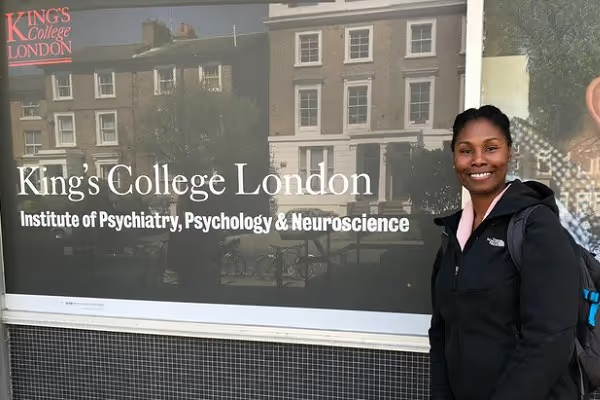I traveled to London to learn about a veteran serving agency called Veterans Aid. Veterans Aid (VA) is a charity based in London that has been in existence since 1932. While the name of the VA has changed over the years, (it was formerly known as the Embankment Fellowship Centre), its core mission has always stayed the same: to provide support to veterans. This name change, which succinctly tells anyone interested in the charity’s goal, helped transform this organization into the highly successful agency it is today.
The other change over the years was the implementation of the Welfare to Wellbeing model, created by Dr. Hugh Milroy. This model sees the process of service delivery in a unique way, one that is focused on the veterans’ needs, not the needs of the system. While the organization knows the general issues, and needs of the veteran community here in the United Kingdom, each intervention is tailored to the veteran being served.
There is no one-size-fits-all approach here at VA. They are not trying to “fix” anyone, nor do they have a need to know a veteran’s life story before they provide assistance. All they need is some basic information, which they verify quickly, and they are off working on interventions based on the needs of the veteran. One might think this happens in person, but often this is taking place over the phone and in a matter of minutes. They can book a hotel stay and figure out additional resources before a veteran has ever stepped foot into their office. I saw this in action and was truly amazed at the swiftness with which they can assist currently homeless veteran or prevent other clients from ever becoming homeless. While I was thoroughly intrigued by their main office, I really wanted to visit their residential site located a few miles away.
I knew their success rate from their website and in talking with staff, which is over 90%, but I was skeptical on how this could be and why this model wasn’t being studied by other providers and agencies focusing on ending homelessness, given their success. Although I started off skeptical, I soon realized how they achieved their success. It had nothing to do with any fancy manualized treatment model, employing highly specialized staff with a long list of licenses or degrees after their names, but it had everything to do with creating a space that was safe, beautiful, intentionally planned, and employing a caring and well-trained team to get the job done.
When I walked through the door at New Belvedere House, I was in awe of the space. It was well lit, cheery, and bursting with vitality from the staff and residents. The accommodations are top notch. There are bright corridors, open green space, a large community kitchen, and a community space where veterans can relax that looks like it’s from an issue of a high-end magazine. Most important of all was what I found in the bedroom awaiting a new veteran. There was fresh clean bedding, a stash of toiletries, a tea kettle, personal utensils, an armoire, and a desk with a lamp and chair. While some may say, what’s the big deal, I say it’s huge!
These are not shared units—veterans are able to move into a space that is clean and well furnished. Veterans are welcomed not just into a program, but also into a temporary home. No part of this space looks or feels institutional. You won’t find any wipe-down furniture here. While this was only week one, I have learned much and can’t wait to take you on my journey next week, which includes spending more time at New Belvedere House to see the program in action and visiting the Royal Hospital Chelsea.
Til then….
Cheers,
Tramecia


.png)
.png)


